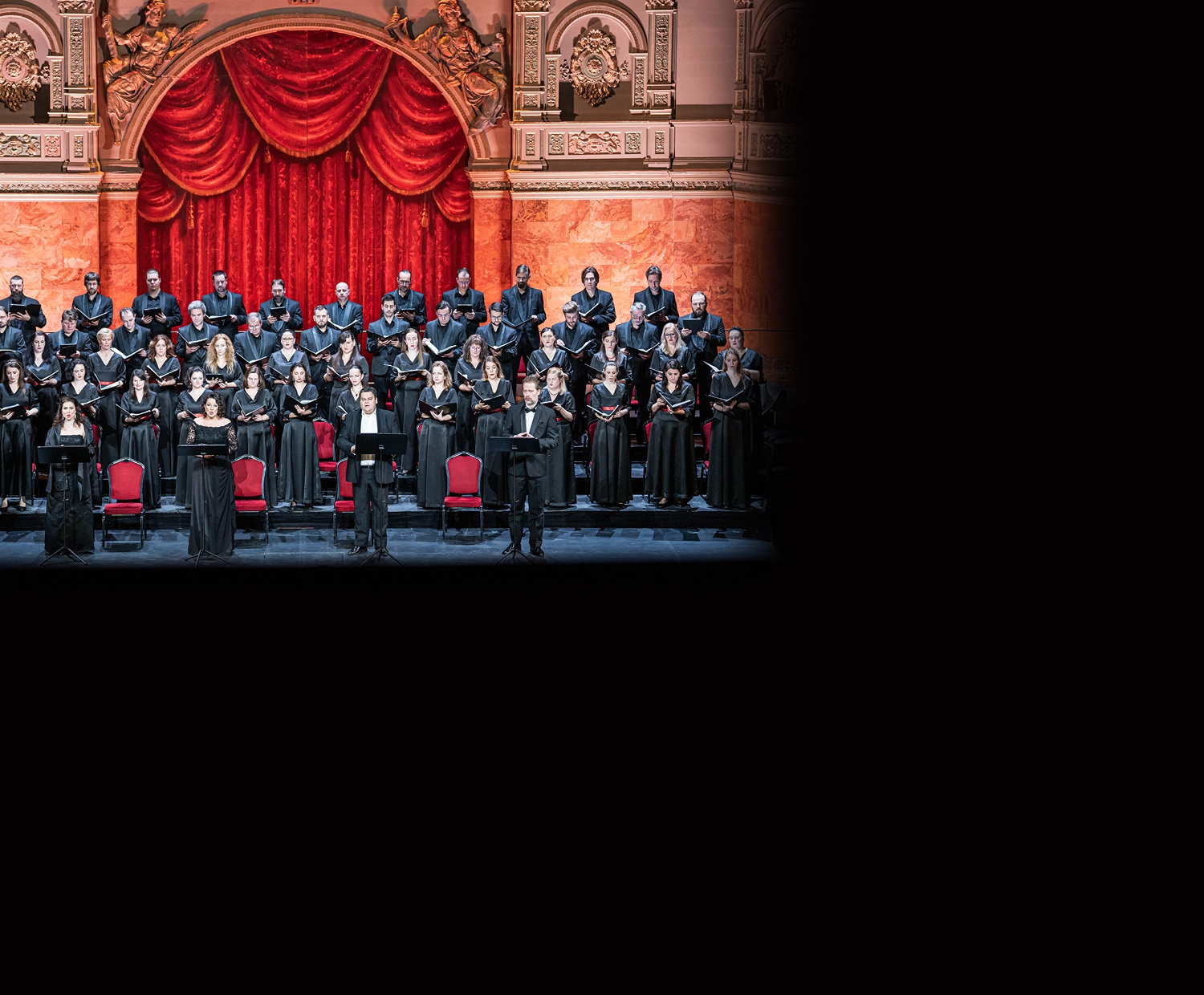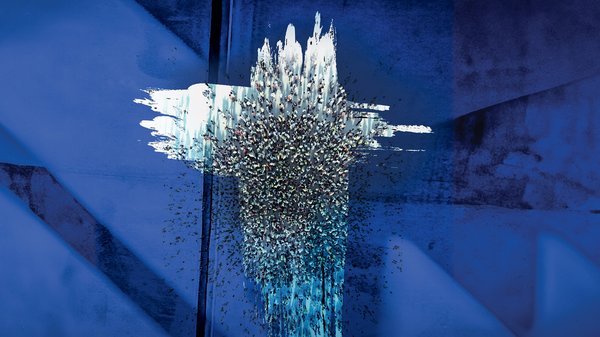
Messiah
Details
In Brief
When, Baron van Swieten, known from Hungarian history as the head of the school programmes of Maria Theresa and her son Joseph II, commissioned Mozart to prepare arrangements of four works by Händel, no one could yet know that among them the Messiah would remain a festive delicacy for the world 250 years later. Mozart shortened the work and enriched it with new instruments, yet in the spirit of the now-prevailing historical approach, everyone performs Händel’s original today. Except for the Hungarian StateOpera: here we believe that with Mozart’s reverent touch the work could only be enriched, and may thus be offered to the public as the joint gift of two geniuses.
Parental guidance
Events
Premiere: Dec. 21, 2019
Media
Concert guide
Introduction
Händel’s only truly “sacred” oratorio, Messiah, does not contain a dramatic plot in the traditional sense: there are no opposing parties, in fact there are not even roles in the usual sense. This oratorio, intended as a “noble entertainment,” whose text was created by creatively assembling, carefully condensing, and delicately adapting passages from the Old and New Testaments, is nevertheless not as clear an oddity here as one might think at first glance. And this is not simply because even in Händel’s lifetime, Messiah was performed not only within consecrated walls but also in theatres. Rather, it is because the work, whose performance history for a long time was dominated by an ever-expanding performing apparatus, sometimes reflecting almost megalomaniacal ambitions, has in recent times conquered opera stages as well. The most notable and trend-setting example of this (which has since proven inspiring in Budapest too) is certainly Claus Guth’s 2009 production at the Theater an der Wien: by shaping and adding a continuous, present-day and everyday storyline, while still remaining true to the spirit and spiritual depth of the work. For Messiah, just like many other oratorios deliberately conceived and created as a counterpoint to opera, surprisingly lends itself well to being staged. What’s more, it even seems to find its place in the 21st-century opera house more naturally than some of Händel’s operas.
Ferenc László
The genesis of the work and Mozart’s version
Händel started to set the subject-matter of the Messiah to music in August 1741 and completed it in just twenty-four days, although he also borrowed parts from his own earlier compositions. He compiled the text with the help of the English poet Charles Jennens (1700–1773). The composer intended this piece to be his Dublin debut, on the invitation from the Duke of Devonshire, Governor of Ireland, to a series of charity performances for the benefit of a hospital and other institutions there. The premiere took place on 13 April 1742 at the recently opened Neal’s Music Hall. The London premiere took place at Covent Garden in the spring of 1743. Afterwards, it became customary to give a charity performance of the oratorio every year in the chapel of the Foundling Hospital. The oratorio was performed a total of thirty-four times during Händel’s lifetime, each time for the benefit of the orphanage. Messiah gained increasing popularity in a short time. In Great Britain, it became customary for the audience to stand and listen to “Hallelujah”, the most famous part of Messiah, performed by the chorus. The origin of this tradition is attributed to King George II (1683–1760), who stood up while listening to “Hallelujah” at the London premiere, and the audience did likewise.
Among Händel’s great oratorios, Messiah is the only one without an actual story. It is not a dramatic oratorio, it does not tell the life of Christ, and it has no direct relation to the liturgy. Most of the texts are prophecies and psalms from the Old Testament, they are not about Christ, but about the awaited, soon-to-come, intangible figure of the Messiah. The three parts evokes the story of the Messiah. The first part is about times before Christ and the birth of the Saviour, the second part is about the passion, and the third part is about redemption. Händel and Jennens’ composition of the text is groundbreaking in a sense that it was probably the first attempt to summarize the life of Christ in a single oratorio. Previous works with a similar subject are either only about the nativity, about the passion, or about certain stages in the life of Jesus. Since the Gospel itself was known to everyone, Händel did not use dramatic dialogues or narratives. However, none of this could prevent the sense of dramatics in the music of Messiah from time to time. It is self-evident in the story of the passion, but Händel contrasts concepts, expressions, or specific details of the meditations powerfully in other parts as well. Following the first performance, Händel made modifications to Messiah all the time. These changes were necessary to adapt the work to the available ensembles of the time. The original orchestra consisted of twenty-five strings, two oboes, two bassoons, two trumpets, and timpani, the continuo was played by a harpsichord, and the chorus consisted of 20 to 25 members. Later, the piece was performed by ensembles of increasing monumentality.
The version presented at the Hungarian State Opera is by Wolfgang Amadeus Mozart, which was first performed in Vienna on 16 March 1789, only thirty years after Händel’s death. Mozart’s version of Messiah, commissioned by Baron Gottfried van Swieten, does not hint at how he himself thought about Händel’s work. It simply indicates what resources were available to van Swieten’s musical company. It was the 1789 performance of Messiah that was to have a radical effect on the course of the oratorio’s performance history. Baron Gottfried Van Swieten, who later translated and edited the text for Haydn’s Creation, had, as a diplomat in London during the late 1760s, become an ardent Handelian. Among other Händel scores, he took back to Austria a copy of the first edition of the full score of Messiah. From 1779, he introduced works by Händel into the annual oratorio series given for charity.
For Messiah, he commissioned Mozart to fill out the accompaniments, largely dispensing with keyboard continuo and replacing the tromba parts practically unplayable for late 18th-century trumpeters. Using the Randall and Abell score and a German translation of the text by Daniel Ebeling, Van Swieten had a copyist prepare a score containing the vocal lines and Handel’s string parts, together with the original dynamic and tempo markings. Onto the staves left blank for his use, Mozart added his woodwind, brass, and string parts; those of Handel’s woodwind or brass parts that he chose to retain, he copied from the Randall and Abell score. Some of the solos were reassigned to voices other than those that Handel specified. The six tenor numbers were divided between the two soprano soloists, “Rejoice greatly” (“Erwach”), originally sung by a soprano went to the tenor, and “But who may abide” (“Doch wer wird ertragen”) to the bass. Van Swieten and Mozart also made a few cuts. They omitted the chorus “Let all the Angels of God” and the aria “Thou art gone up on high”. Mozart replaced the aria “If God be for us” (“Wenn Gott ist für uns”) with an accompanied recitative of his own composition. His abridged version of “The trumpet shall sound” (“Sie schallt die Posaun”) gives most of the demanding tromba part to a horn. Mozart’s woodwind complement includes paired flutes (piccolo in the “Pifa”), oboes, clarinets, bassoons, and horns. In addition to two trumpets and tympani, his scoring calls for three trombones in the “Overtura” and the chorus “Since by man came death” (“Wie durch einen die Tod”). The original performance materials, which have been preserved, show that the trombones also doubled the alto, tenor, and bass lines in the tutti choruses, according to the standard Austrian practice at that time.
Diána Eszter Mátrai (based on Teri Noel Towe)
